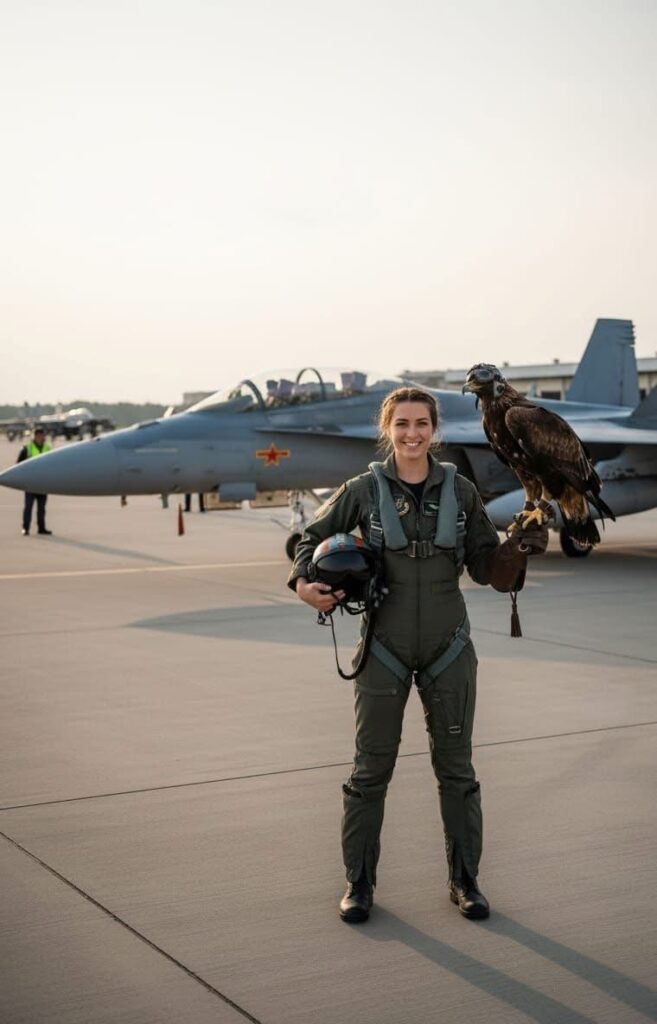
In the background, there is a fighter jet, which looks like a Boeing F/A-18 Hornet or a similar naval fighter aircraft, possibly from the Chinese People’s Liberation Army Navy (PLAN) given the red star insignia visible on the jet’s tail fin and canopy. The aircraft’s sleek profile, twin-engine design, and sharp angles mark it as a modern multirole fighter built for both speed and agility. Its aerodynamic shape is designed to excel in dogfights while maintaining the power to deliver precision strikes. The presence of the red star—a symbol long associated with Chinese military forces—suggests this is a PLAN variant, perhaps the Shenyang J-15, often referred to as the “Flying Shark,” which is China’s carrier-based fighter modeled after the Russian Su-33 but bears a passing resemblance to the F/A-18 Hornet in overall form and function.
The fighter’s design reflects decades of military evolution. The resemblance to the F/A-18 is not accidental. Both aircraft were developed with similar tactical needs in mind: the ability to operate from aircraft carriers, handle short takeoffs and arrested landings, and perform well in both air-to-air and air-to-ground missions. The J-15, in particular, showcases China’s growing ambitions in naval aviation. For years, carrier operations were the domain of the United States and a few select powers. The PLAN’s adoption of such fighters marks China’s commitment to projecting power beyond its coastal defenses and asserting a presence across the Pacific and Indian Oceans.
The jet’s markings tell their own story. The red star, often accompanied by a yellow outline or number, identifies it as part of the Chinese armed forces. Beneath the insignia, faint stenciling and serial numbers may denote its squadron or aircraft carrier assignment. The canopy glints in the sunlight, revealing a tinted bubble designed to shield the pilot’s eyes from glare while providing maximum visibility. Every curve and rivet of the aircraft suggests precision engineering—a blend of brute force and technological refinement.
In the broader context, the presence of such an aircraft in the background could signify a moment of readiness or tension. Modern fighter jets like this one are not just symbols of national pride; they represent deterrence, speed, and the projection of strategic intent. Whether stationed on a carrier deck or parked on a coastal airstrip, a PLAN jet of this kind would serve as a reminder of China’s expanding military reach and technological progress.
If this image were captured on a naval base or an air show, the backdrop of the fighter might serve to emphasize power, discipline, and the cutting edge of aviation. To the trained eye, even the subtle differences in the jet’s wingtip design, air intake shape, and tail configuration can offer clues to its exact model and purpose. The comparison to the F/A-18 Hornet is apt not just because of their physical similarity but because both embody a nation’s pursuit of mastery over the skies and seas.
In essence, the fighter jet in the background is more than machinery—it’s a symbol of evolving strategy, industrial capability, and global ambition. Whether viewed as a marvel of engineering or an instrument of power, it represents the ever-changing balance of air and naval dominance in the modern world.


